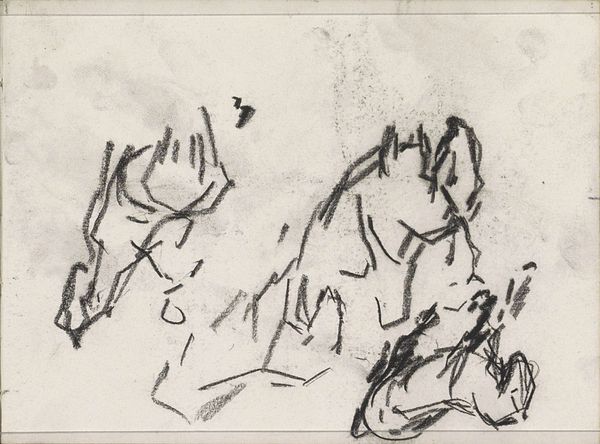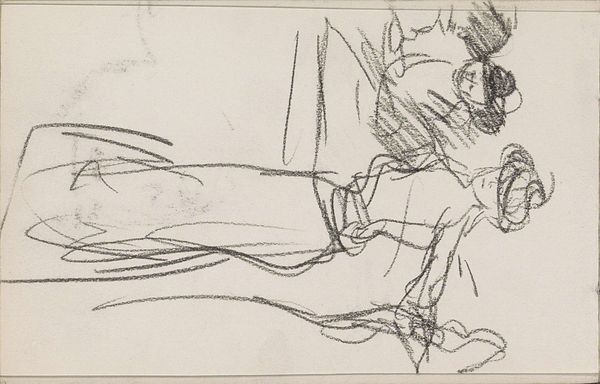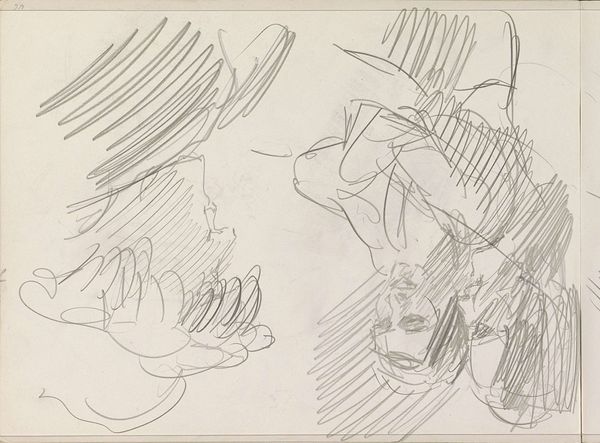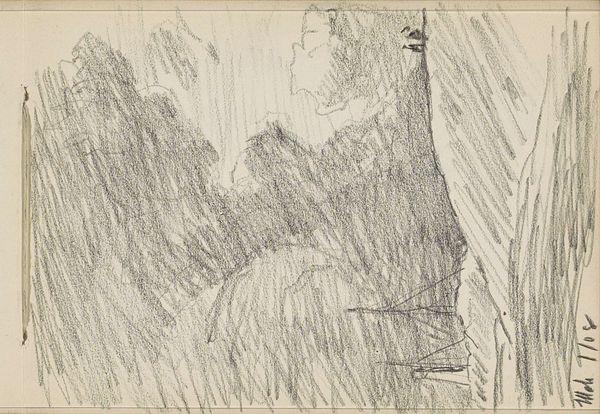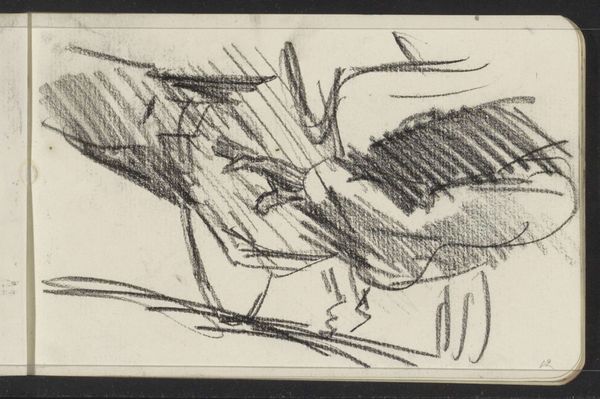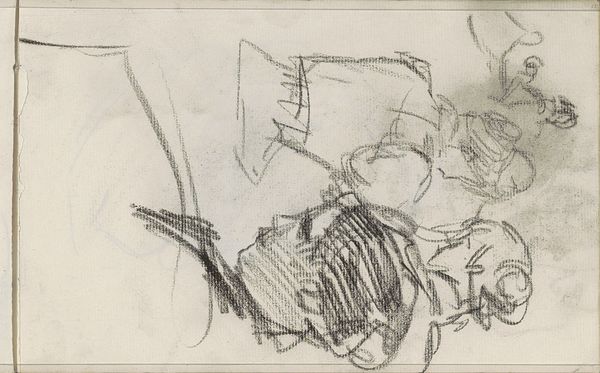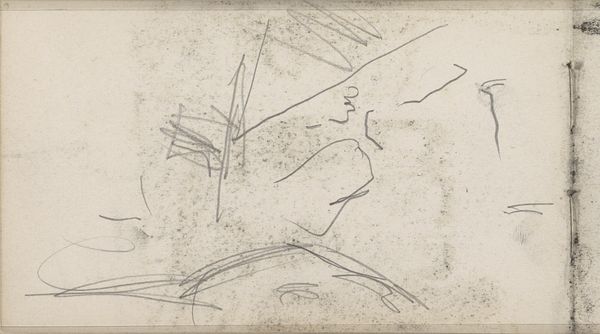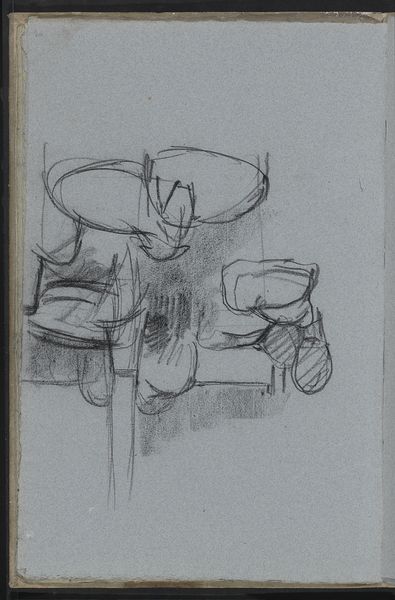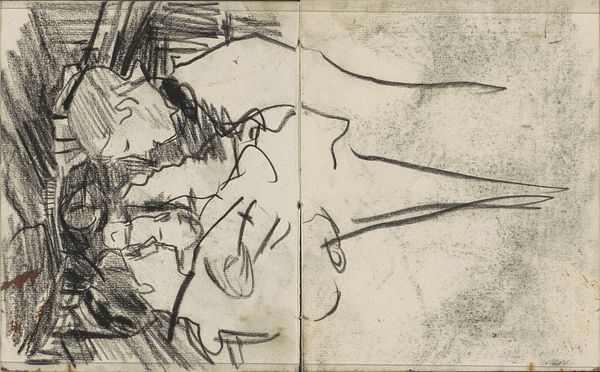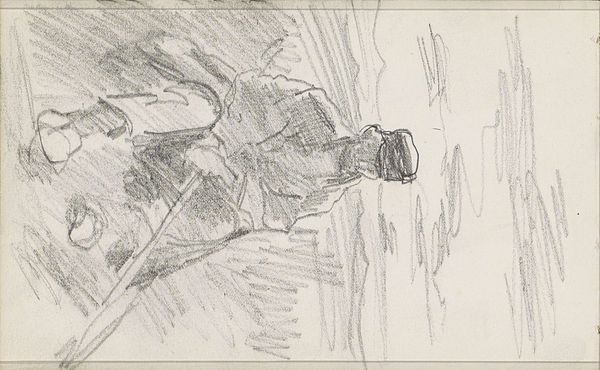
Copyright: Rijks Museum: Open Domain
Editor: Here we have "Voorstelling in een theater of circus," a graphite drawing by Isaac Israels, dating roughly from 1875 to 1934. It’s housed here at the Rijksmuseum. What immediately strikes me is its energy. It's just a sketch, but I can almost feel the motion and light of the scene. What stands out to you in this piece? Curator: The immediate visual impact lies in the juxtaposition of heavy, almost sculptural, graphite work against the fleeting, linear suggestions of figures. Note how Israels utilizes a limited tonal range, primarily focusing on the contrast between light and shadow to define forms. Consider the weight and density of the graphite. How does its materiality contribute to the overall composition? Editor: It does feel very raw. It seems like he's really exploring the tonal qualities of the graphite, like the heavy shading next to areas that are barely touched. Curator: Precisely. This interplay of positive and negative space creates a dynamic visual rhythm. The heavy shading, built up through layered strokes, establishes depth, while the light, unworked areas provide breathing room for the eye. The drawing presents not a finished image, but a record of the artist’s thinking and seeing, wouldn't you say? Editor: Yes, it is like we are inside his head, seeing how his thoughts took shape as he drew. You are so right; it gives it this feeling of life, like movement captured on paper. Curator: Indeed. This is sketch work; its beauty is not in its perfection, but in its intrinsic form. Israels invites us to partake in his process. Editor: I’m now really seeing the piece, understanding how his marks are like a language revealing a story in my own imagination.
Comments
No comments
Be the first to comment and join the conversation on the ultimate creative platform.
